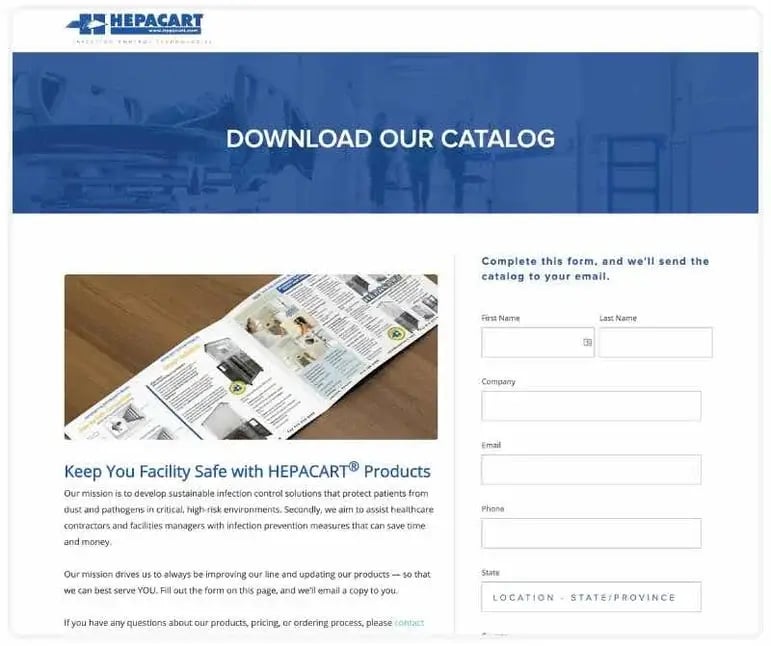How Your B2B Website Can Convert More Visitors into Leads
 Krista
|
Krista
|

Does your website generate leads? If not, here are five things to try.
Are you happy with the leads you're getting from your website? Maybe a better question is: do you have a website that functions as a lead-generating tool?
You know your B2B website is doing what it's supposed to do when it:
- Drives traffic
- Attracts the right visitors (your target audience)
- Converts visitors into leads
A successful B2B website will do all of these things. If one or more is underperforming or not hitting your marketing goals, there could be many contributing factors like weak or nonexistent SEO, outdated website design, poor site structure, or a lack of actionable steps.
This post will cover some quick wins that will help with the third piece of the successful website pie: converting visitors into leads. Here are five things you can do today to start improving your B2B conversion rate.
1. Offer more than product content and sales pitches.
While having product and service pages on your website and having a catalog available for download is essential in converting B2B website visitors into customers, it's also necessary to provide educational information via ebooks, whitepapers, videos, blog articles, and other forms of content to educate and delight them. Plus, it helps to establish your company as a trustworthy go-to resource.
B2B customers want more than just a list of available products or services. They want opportunities to further their knowledge and understanding of topics directly and indirectly relevant to their industry or line of work. Part of converting your B2B website visitors into customers is addressing specific needs. Sometimes your B2B visitors want a sales pitch, but most of the time, they just want helpful information that will steer them in the right direction.
For instance, if your company is a manufacturer of car replacement parts, and your primary audience is auto parts stores, publishing a blog article or video that addresses a particular concern that they commonly face will delight them because it provides a solution to their problem. It will also bring qualified leads to your website, where they can learn more about your business.
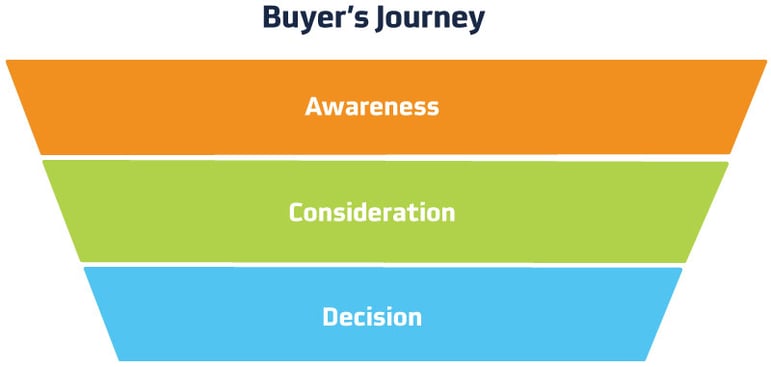
Offering a specific solution to a problem is also part of initiating your visitor's buyer's journey. By creating helpful, non-sales content, you're creating touchpoints that will help nurture your B2B personas towards a purchase. Understanding your audience’s needs is going to get you a lot farther than hard sales pushes and claims that you’re superior to your competitors.
By empowering your B2B website visitors with pertinent information, you're creating a nurturing sales environment that doesn't prematurely pressure them to buy.
Establishing B2B buyer personas allows you to segment your audience and create effective marketing campaigns. Find out how to develop your personas by downloading our workbook.
2. Implement live chat or a chatbot.
First, let’s define each. Live chat is real-time interaction with a human while a chatbot is a computer program that simulates a natural human conversation but is actually using instant pre-set answers and questions.
While live chat and chatbots are different and have their own set of benefits, they both offer a great opportunity to engage website visitors. When a visitor engages with chat — whether live or automated — they often convert to leads that become customers. In fact, both chat platforms can increase website conversions by 45%.
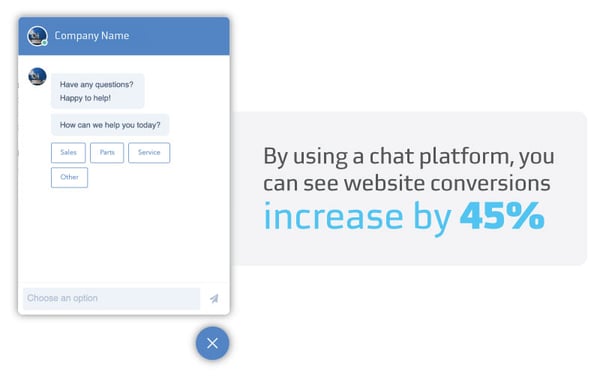
This free starter guide contains best practices for creating chatbots that can help you qualify leads, book meetings, provide customer support, and scale your one-to-one conversations.
3. Use bold and clear CTAs.
What is a CTA? A call-to-action (CTA) is an image, button, or a hyperlinked line of text that prompts website visitors to take a specific action. It is, quite literally, a call to take action.
While CTAs themselves do not convert traffic, they can push visitors to landing pages and forms, both of which are key conversion tools.
CTAs should be:
- Bigger and bolder than most other elements on the page so that people are drawn to them
- A proponent of value, driving website visitors to guides, white papers, checklists, free trials, consultations, estimate calculators, assessments, etc.
- Clearly clickable so that visitors know to click on it
- Simple and clear
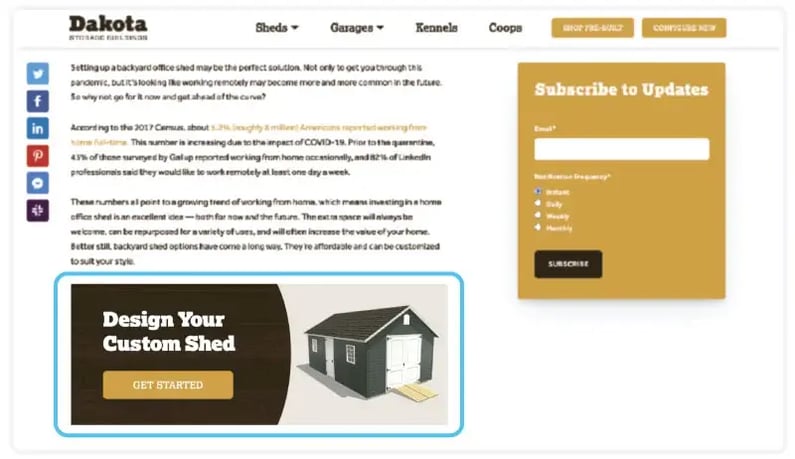
Keep reading to find out how CTAs and landing pages go hand-in-hand.
4. Utilize landing pages.
Because the purpose of landing pages is to capture information, they are great lead generation tools. Landing pages typically include an attention-grabbing headline, a compelling description of a valuable offer (e.g., a guide, white paper, checklist, estimate calculator, etc.), supporting images, and a form to capture the visitor's information.
In short: the content and images on landing pages should present the value of an offer in such an enticing way that people want to fill out the page form in exchange for the offer.
Here’s what makes a landing page effective.
- They’re simple, clear, and have one CTA: to fill out the form on the page.
- They contain an information-capturing form.
- They don’t have the main site navigation at the top of the page. This way visitors can focus on completing the form and not continuing to search your site.
- They clearly explain what the offer is, and they make it sound irresistible. Remember, it has to be valuable to your visitors, or they won’t be willing to fill out the form.
5. Make sure your website has forms.
Without web forms, websites wouldn’t have a way to collect information or convert leads. In a highly digital world, it’s hard to think of a successful B2B business that doesn’t have at least one form on their site.
As mentioned above, forms are usually the most effective when a visitor gets something in return for filling it out.
Great places to use forms include:
- Landing pages (remember these?)
- Product or services page pop up
- Blog sidebar navigation
The fewer the fields in your forms, the higher the conversion potential, so ask only for the information you really need (i.e., first name, company name, email address).
Here are our recommendations for creating forms.
- Only ask for the information you need for you or your sales team. Also, avoid asking for sensitive information that companies or consumers may not want to disclose.
- Consider the value of the offer. The more valuable an offer may be perceived, the more information you may be able to ask for in return. If it’s a newsletter subscription, only ask for an email address (and maybe first name, at most).
- Reduce anxiety. People are more resistant to give up their information these days, especially because of the increase in spam. Add a privacy message (or link to your privacy policy) that indicates their email will not be shared or sold.
- Fulfill the request instantly if advertising a downloadable offer. For example, if your form is for a white paper download, include a link to download that white paper on the very next page (typically called a Thank You page).
One final note on this: ALWAYS include a form on your Contact Us page.
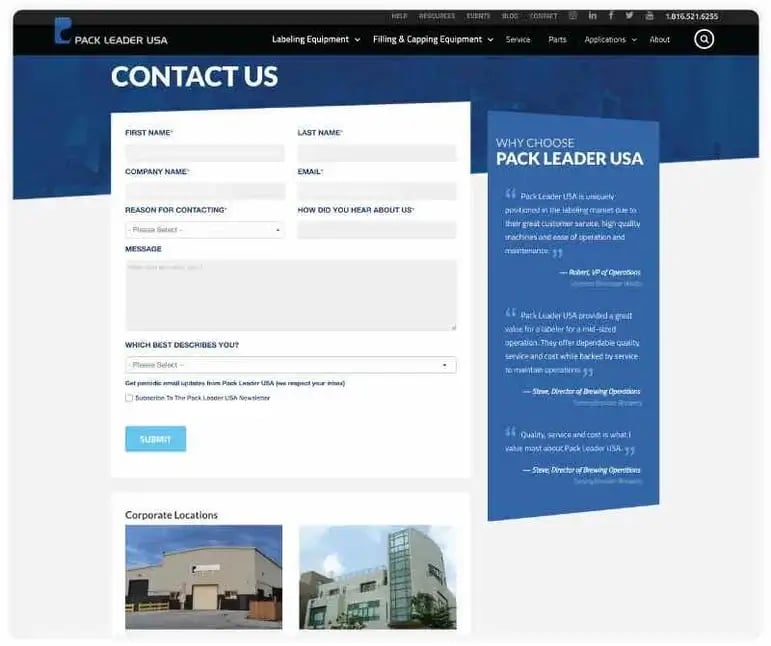
Learn everything you need to know about creating, formatting, and embedding web forms. Download Web Forms: The Ultimate Guide.
Are you ready to make your B2B website a lead generating machine?
If you’re getting the right traffic to your site (your target personas) and you implement the five actions laid out in this article, your B2B website will convert visitors into leads.
Are you excited?
This is a chance to ramp up one of your most valuable lead-generating marketing tools. Are you ready to implement one or more of these action items today? If so, the chances are very good that you will see an improvement.
However, if these tasks seem daunting or you just don’t have the time or staff to make it happen, that’s where a B2B marketing agency can help. If you’re ready to talk about ways to improve your website’s conversion rate, contact us. Or, if you’re not ready, feel free to explore our services or read more of our helpful B2B marketing articles.
More B2B marketing insights:
- Website Redesign Must-Haves for Increasing Traffic, Part 1
- Website Redesign Must-Haves for Increasing Traffic & Generating Leads, Part 2
- Website Redesign Must-Haves for Converting Leads & Improving Sales, Part 3
- Website Rebranding Success Stories
- 5 Ways To Target B2B Customers Using Social Media
- How to Improve Your Content Marketing Strategy for B2B
- Top 5 Brands that Use B2B Video Marketing
Subscribe to Our Blog
Stay up to date with the latest marketing, sales, and service tips.


